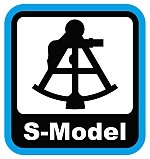ACE
burst onto the small scale scene with a range of much needed modern
Soviet vehicles, one of the first was the BRDM 2 (hard to believe
over 11 years ago now) followed by the BMP. Since their release
(despite the growth of Eastern European companies) there has been
very little modern Russian released in plastic, until now with Model
Collect and S-Model both releasing Modern Russian Vehicles.
I am
not going to go into detail about the history nor commenting on
the box art as this information can be found elsewhere. This will
be a direct comparison between the ACE BRDM and the newer S-Model
kit, with the BMP being dealt with in another article. I have also
realised that the ACE BRDM has never been reviewed at "ontheway",
so this will fill that gap. I should, at this point, state that
ACE are only short run moulds which cause a bit of flash, and S-Model
use steel moulds producing a sharper model, although I should also
point out that S-Model is a wargaming kit and simplified around
the drive area as you will see.
The ACE model is long out of production, so this is for those who
already have it, but not built it yet or, for those that already
have it, but want more.
So
what do we get? Well the ACE kit comes in its usual form of soft-ish
white-ish plastic, the surface shows good detail, the sprue attachment
points are a little crude and there is a slight amount of flash,
but nothing major or problematic. The S-Model comes in a harder
green plastic which shows good detail.
DIMENSIONS
Both
kits measure out to 1/72nd scale when completed, however there are
some notable differences in the layout. I have used the M Hobby
Drawings as a reference, as they are considered to be the most accurate.
Both vehicles fit these drawings, with just the details being the
difference.
.JPG)
The pictures
are a bit misleading as both hulls are closer to the camera than
the plans and so seem larger. The M Hobby drawing is of an earlier
version (as can be seen by the engine deck) as I have, so far, found
no drawings depicting the later type. As can be seen there is a
big difference between the two both in the size of the engine deck
and position of the turret. According to the drawings the
S-Model is correct, this is backed up by photographic evidence as
to the position of the turret. During Alex Clarks excellent build
of the ACE model that appeared in AFV Modeller No2 he also moved
the turret about 2.5mm to the rear. Apart from the turret position
and the subsequent length of the engine deck, the other main difference
are the red and yellow marked angles on the superstructure. On the
S-Model these angles are nearly vertical, whereas they are more
slanted on the ACE model, here the ACE model is correct, as can
be seen by the drawing.
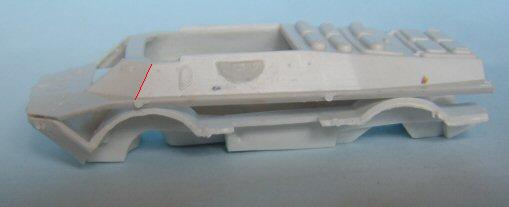
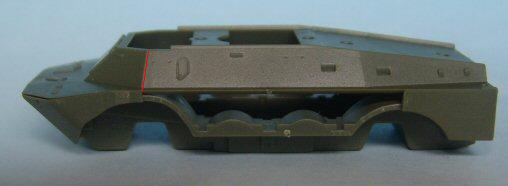
Here
the angles are more clear to see. The problem with the engine deck
lies in the blue rectangle, the access cover is too large in the
ACE kit thereby putting everything else out, it is a problem that
persisted through the whole series made by ACE as can be seen on
the AT 5 below.
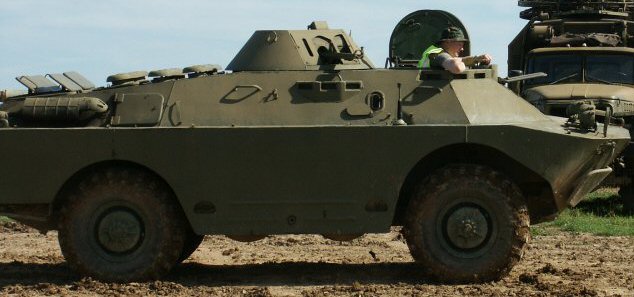
This
shows how far back the turret sits on the real vehicle.
TURRET
Both
turrets are very similar, the main difference between them is that
the S-Model gun is moveable, whereas the ACE must be glued in place.
The
S-Model turret also has an extra roof mounted periscope, this is
a later edition as a result of events in Afghanistan. However both
type continued in service. The only other part to the turret are
the guns, the 14.2mm KPVT and the 7.62mm coaxial.
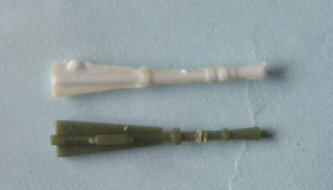

The
guns are fairly similar as you would expect, the S-Model has the
typical barrel handle, which is missing in the ACE kit.
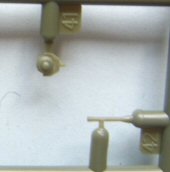
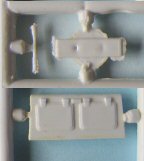
Both
coaxial guns are hidden away on the sprues, the ACE is rather large
(looks more 12.7mm) whilst the S-Model is better, although care
will be needed when removing it from the sprue.
DRIVE
TRAIN AND WHEELS
This
is where the two differ the most, with the ACE having a highly detailed
and complex assembly, whilst the S Model is split into 8 parts.
Starting with the vehicle underneath.
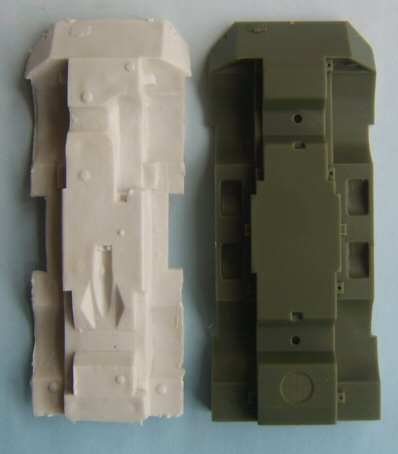
Here
the difference can be seen with the ACE model showing more detail,
but somehow missing the intake for the water jet propulsion. The
ACE model also has cutouts for the drive shafts that are missing
from S-Model, other than that they are fairly similar.
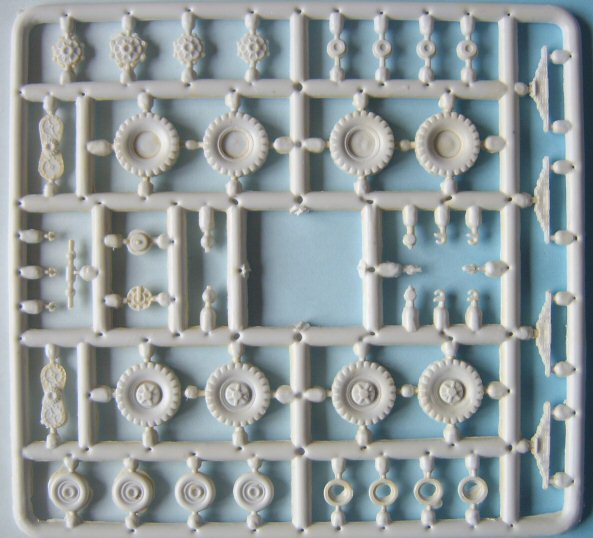
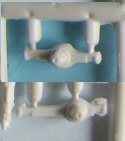
Here
are the multiple parts that make up the ACE suspension with the
two differential axle being on another sprue.

Here
are the 8 parts for the S-Model with the springs and axles being
one piece, wheels are also one part as are the two supplementry
wheels and thereby lies a problem! With the S-Model the belly wheels
can only be built with the wheels lowered. However this is not normal
operation : the two wheels should only be lowered when travelling
over boggy and difficult terrain, so for them to be raised requires
a bit of work. The belly wheels are also too fat, which is a minor
problem considering their position.
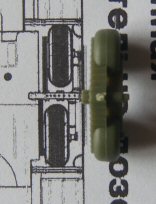 wheels against the drawing.
wheels against the drawing. .JPG) Next to the ACE wheel
Next to the ACE wheel
Coming
back to the main wheels, early ACE kits provided them as two halves
to be glued together, however doing this also meant losing the tread
pattern, later releases came with rubber tyres, which had goo tread
pattern but were slightly on the small side. The S-Model wheels
display a tread pattern albeit incorrect, but it is very faint and
not as chunky as it should be.
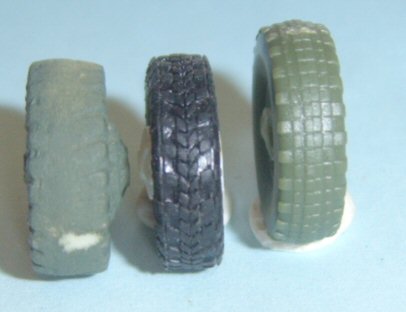
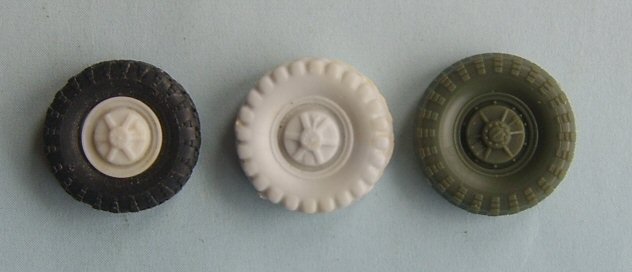
A comparison
of the three wheels together.
OTHER
DETAILS
.JPG)
.JPG)
The
S-Model sprue. This is the same sprue as for the AT 5 version with
just the hull roof being different, so you get either the AT 5 launcher
and tubes or the turret and gun as spares. Not much use for the
launcher although the missile containers will be handy, but a lot
of use for the spare turrets, given that they were also mounted
on the BTR 60 and BTR 70 and used in a number of conversions for
the BMP 1.
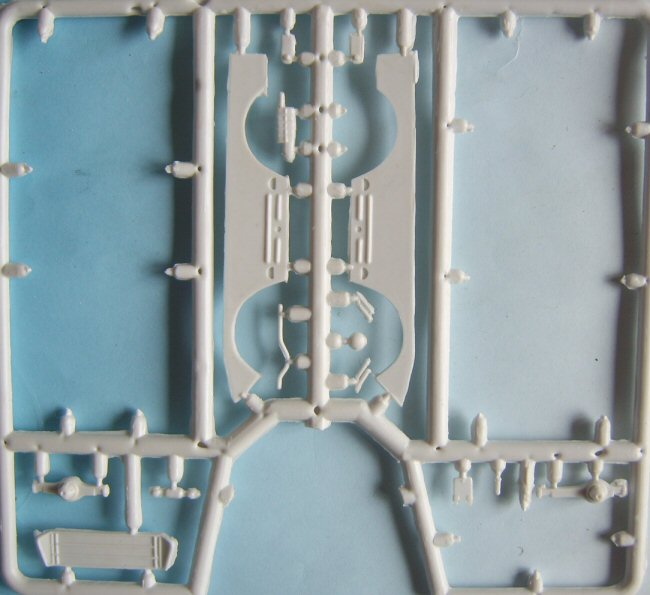
The
other ACE sprue minus the hull pieces.
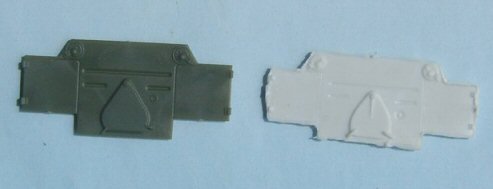 The
rear plates.
The
rear plates. 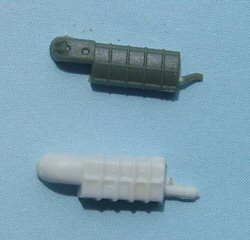 the
exhausts
the
exhausts
PE
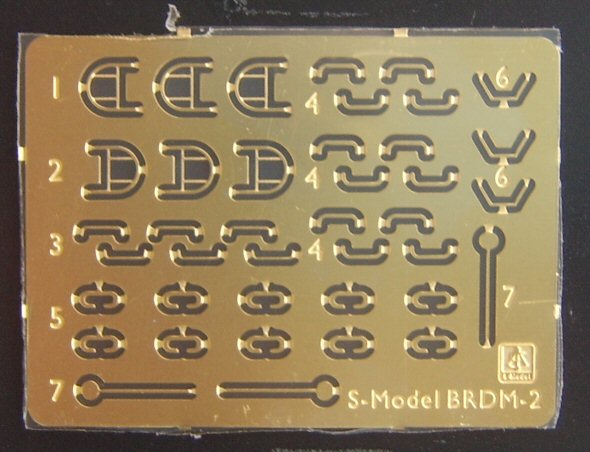
The
S-Model PE fret, showing the light guards, tow hooks, hand rails
and mirrors. ACE didn't provide any PE with their kits.
MARKINGS
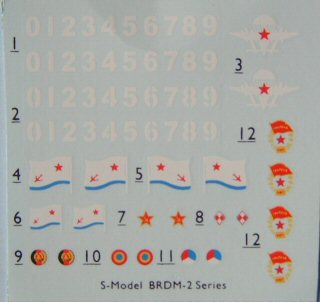
S-Model provide
a set of generic decals, but showing only one scheme for a naval
version in the instructions. They are, as far as I can make out,
a generic set of numbers : Soviet ( Naval , Airborne version and
Guards), Polish, NVA, Czech, Romanian and one presumably Russian
unit as the red star has a hammer and sickle but a yellow outline.
Unfortunately I don't have the ACE decals to hand, (as they are
somewhere safe!) but ACE provided decals for 4 variants Naval Inf,
Soviet Guards, Czech and NVA. ACE decals were usually very well
printed, they didn't however include any numbers.
THE
AT 5
Since
the AT 5 version is the same sprue as the gun variant with just
the hull roof differing between the two, all comments about the
gun variant apply here as well.
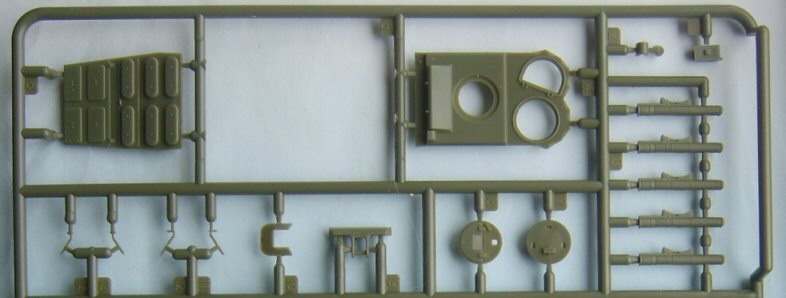
the new roof and parts for the launcher.
Because
of the problem with the ACE engine deck being too long, it has slightly
altered the top plate. The launcher is in the correct position,
but this has made the reload hatch too small.
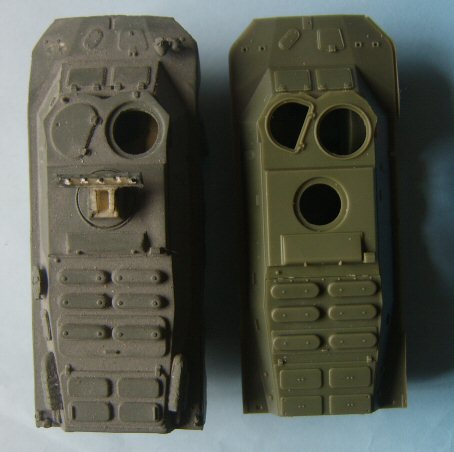 The ACE hull looks slightly bigger due to it being on wheels and
so closer to the camera. However you can still see that the reload
hatch is smaller than the S-Model hatch.
The ACE hull looks slightly bigger due to it being on wheels and
so closer to the camera. However you can still see that the reload
hatch is smaller than the S-Model hatch.
CONCLUSION
Given the 11+
years difference between the kits, it is obvious that the S-Model
would benefit from this and the fact that it is made with steel
moulds, rather than the short run moulds of ACE. Despite being a
wargaming model, there is enough detail to satisfy most modellers.
The open hatches are a bonus as are the spare parts. The PE is a
nice touch, the light guards are useful, but some will want to replace
the hand holds with wire as they are 2 dimensional. The generic
nature of the decals means that you might want to source different
ones when making specific vehicles. Overall the S-Model makes a
nice BRDM2 that would benefit from some new wheels.
References
The
main reference for this comparison, was done using the M-Hobby BRDM
drawings, which are considered to be the best.
There
are plenty of walkarounds on the internet for those wishing to add
more.

